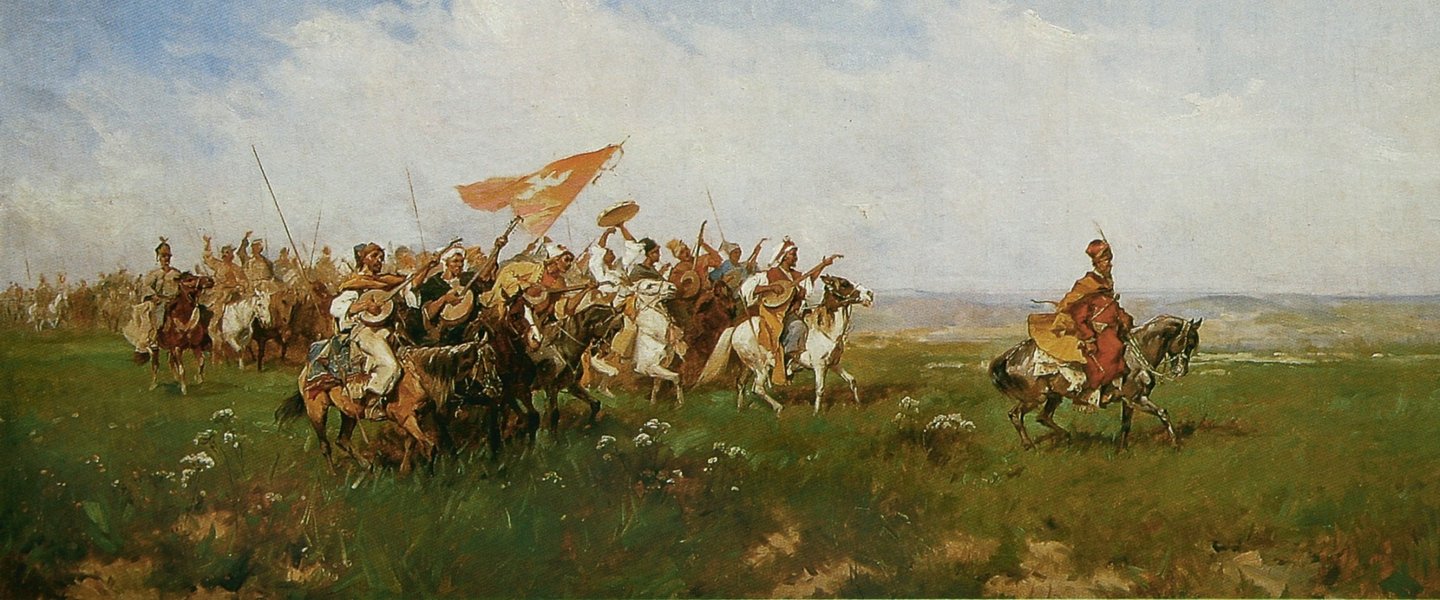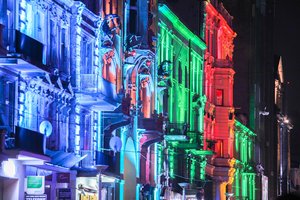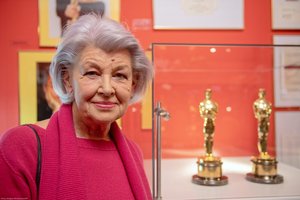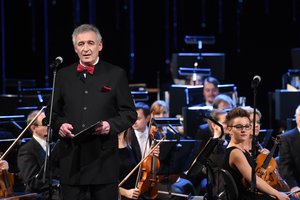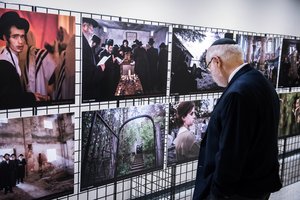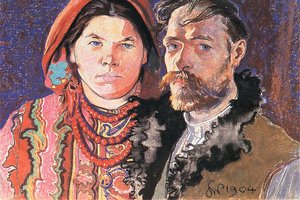Motion fixed on canvas
His works were said to be ahead of their times. One of the first artists to take pictures, he would set the photographed scenes in the steppes of Ukraine. An exhibition of Józef Brandt’s paintings is on display at the Oronsko Palace this October.
His was the theme of motion. He loved horses and the history of 17th-century Poland, with its trials and tribulations, and hunting sprees. But unlike Juliusz Kossak and other painters of Munich school of which Brandt was the leader, he gave up pathos and went for freshness instead. Already in the 19th century, Józef Brandt made good money from his art, being one of the best-earning painters in Poland and Germany. Art connoisseurs put a high value on his battle scenes to this day. The most expensive ones, such as the Song of the Cossack Victors, can fetch over a million zlotys at auctions in Poland.
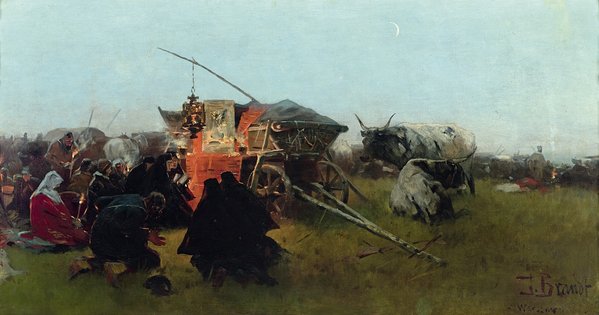 Brandt’s canvases sold well not only on account of the realism of his battle scenes or his vivid depiction of horses. “This is valuable and trailblazing art that experiments with light and photography. He was one of the first Polish artists to use the auto-shutter camera. He would take pictures of prearranged scenes, transfer them onto canvas, and paint the setting, for example a Ukrainian steppe,” explains Monika Bartoszek, a curator of Józef Brandt (1841 - 1915). Exhibition on the Centenary of the Artist’s Death. According to her, the event is a real treat for both art specialists and tourists. “Opportunities to see Józef Brandt’s oeuvre are few and far between. It’s his first monographic exhibition after his death. Individual paintings by Brandt may have been featured at exhibitions of Munich school artists, but never before has the selection been so comprehensive,” Monika Bartoszek tells Polska.pl.
Brandt’s canvases sold well not only on account of the realism of his battle scenes or his vivid depiction of horses. “This is valuable and trailblazing art that experiments with light and photography. He was one of the first Polish artists to use the auto-shutter camera. He would take pictures of prearranged scenes, transfer them onto canvas, and paint the setting, for example a Ukrainian steppe,” explains Monika Bartoszek, a curator of Józef Brandt (1841 - 1915). Exhibition on the Centenary of the Artist’s Death. According to her, the event is a real treat for both art specialists and tourists. “Opportunities to see Józef Brandt’s oeuvre are few and far between. It’s his first monographic exhibition after his death. Individual paintings by Brandt may have been featured at exhibitions of Munich school artists, but never before has the selection been so comprehensive,” Monika Bartoszek tells Polska.pl.

Brandt – an outstanding figure
After studying in Paris and Munich, Brandt debuted to great acclaim at the Society for the Encouragement of Fine Arts in 1861. From 1875, he ran a private school of painting in Bayern, and went on to become the leader of the so-called Munich school of Polish painting, whose members included Aleksander Gierymski, Alfred Kowalski, Wojciech Kossak, Tadeusz Ajdukiewicz, and Leon Wyczółkowski. After marrying Helena Pruszakowa, he alternated between Munich and Oronsko, where he would invite his disciples, pay for their board and lodging, and help them hone their painting skills. “Brandt is an outstanding figure. One of the few Polish painters of his days to make a living from painting. Asked how he could cope so well with managing an estate where he kept cows and horses, he bluntly replied “I paint!” His painting proceeds covered the upkeep of artists coming to Oronsko, who formed the so-called Free Academy of Oronsko,” says Monika Bartoszek.
Until 25 October, the Centre of Polish Sculpture in Oronsko will be hosting an exhibition of Józef Brandt’s paintings and collections, mounted to mark the centenary of his death. Alongside 50 paintings that include Catching a Horse with a Lasso (ca. 1880) and Mother of God (ca. 1909) and are on loan from museums and private collections, on view are the artist’s studio and collection. Housing 20th-century Polish sculpture today, the Oronsko Palace used to be Brandt’s residence, after he inherited it in 1877 following the marriage with Helena Pruszakowa. Two additional exhibitions are running in parallel at the Oronsko Palace: Trot, Walk, Gallop, showcasing works by contemporary artists who share Brandt’s love for horses; and Heritage. Looking at Brandt, staged by artists from the three countries the painter was associated with: Poland, Germany, and Ukraine.
Other highlights at Oronsko are an outdoor painting studio which is called ‘beehive’ because of its shape, and the eastern collection that Brandt assembled during his travels to Polish borderlands, where he would acquire military objects, handicraft, cloths, and furniture. The collection once adorned his studio in Munich.
KAROLINA KOWALSKA

Centre of Polish Sculpture
The Centre is worth a visit not only for Brandt. Most of the collection has been donated by artists who have exhibited and created their works here over the last 40 years. The collection started growing 48 years ago, when a group of sculptors descended on Oronsko and began renovating the historic building all by themselves. They turned it into their regular haunt, and took material from a nearby quarry at Szydlowiec. After the Ministry of Culture took possession of the palace and its big park in 1980, the sculptors lost their unique studio. What they gained instead was an exhibition space; Oronsko became home of a Centre of Polish Sculpture which received many sculpture donations.
Today, the Centre is a treasure trove of Polish sculpture of the second half the 20th century, while also accommodating objects, installations and conceptual art created by the sculptors. Some of the choice items are The Aurochs by Magdalena Abakanowicz from 2006, the figure of a man by Paweł Althamer from 1993, Cain by Mirosław Bałka from 1987, and Fangor from the 2007/08 Signatures series by Władysław Fangor. Also on display are pieces from the early 20th century and the interwar period, created to show the continuity of Poland’s sculpting tradition. This section contains works by Konstanty Laszczka and Stanisław Ostrowski (active at the turn of the 19th century), as well as Olga Niewska, Katarzyna Kobro, and Alfons Karny (dating from the 1920s and 1930s).
16.10.2015
